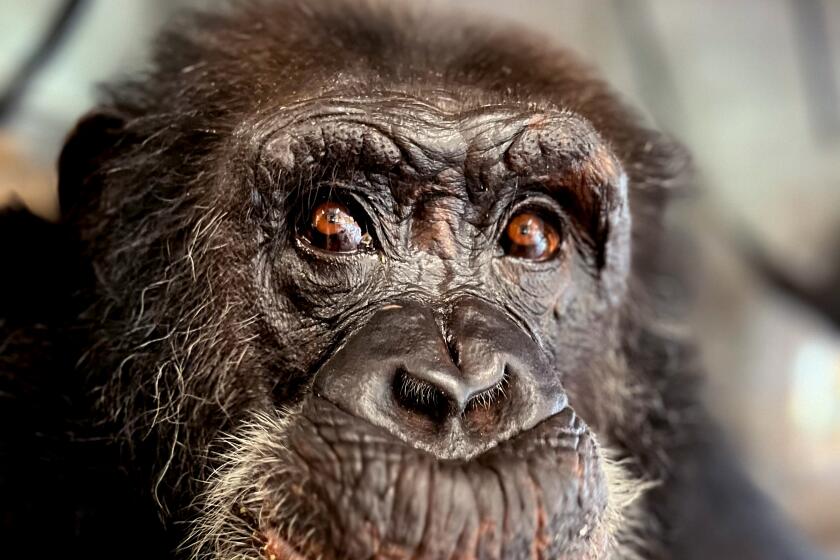Book review: ‘How the Dog Became the Dog’
My household includes some bipeds and a four-legged Wheaton Terrier named Molly. That shaggy canine shared the room with me some nights when I was reading Mark Derr’s “How the Dog Became the Dog,” an intriguing but very dense analysis of her distant ancestry. A few times, as is usual in our Los Angeles neighborhood, the coyotes that nest about a half-mile away were yipping and howling into the darkness while I read.
Those cries remind humans that wildness persists even in a land of ATM machines. But to Molly, it seems even especially troubling, setting off her own moaning and running. When that happens, I wonder: Is she upset that some noisy DNA cousins are disrupting her rest? Is she afraid that potential predators are nearby? Or is she really expressing jealousy that possible playmates are at liberty to roam and hunt, free of her own silly ties to demanding, sentimental humans?
Molly won’t answer that. But in a lot of ways, Derr’s book seeks to get at the existential mystery of that ancient link between people and dogs. In some ways, it succeeds in taking the reader back to prehistoric caves and Neanderthal settlements where wolves walked the perimeters, digging through waste piles for food, hoping for a tossed bone and waiting to join a hunt.
A dog expert and author of the books “Dog’s Best Friend” and “A Dog’s History of America,” Derr burrows into the process of how the very DNA of wolves changed over time because of human contact and breeding. The wolf and the human, he writes, “were drawn to each other by their great sociability and curiosity, and they stayed together because of their mutual utility.”
The alliance between wolves and “furless bipeds” provided the animals with access to a relatively steady food supply and easier conditions to raise pups. “The biped gained a hunting partner who greatly increased its take, a guard against the dangers of the night, a guide in life and death, a beast of burden, a traveling companion, and a lap dog,” Derr explains in a section written with skill and obvious passion.
At other times, however, Derr drills repetitively into issues, circling again and again from different geographic points as his nomadic tribes and packs of “dogwolves” traverse ancient China, Africa, Europe and America. He cites a numbing avalanche of archaeological, biological, genetic, meteorological and other evidence. At one point, for example, I was utterly lost in a discussion of DNA mapping — and the relatively sparse number and poor quality of photographs didn’t make it any easier.
The result is a book that often reads more like a scholarly dissertation than a chatty missive from another “dog whisperer”: It is not one of those popular dog books you might buy as a Christmas stocking stuffer for your cousin Susie who has three beagles.
Instead, “How the Dog Became the Dog” takes aim at a variety of scientific questions such as whether the evolution of the dog from the wolf occurred 135,000 years ago or maybe as recently as 12,000 years ago (depending on the theory and proofs). For this reviewer, the most compelling takeaway point remains how little we truly understand about the reasons why I share my house with a domesticated descendant of a wolf and not, say, a raccoon or a miniature deer.
“More profoundly, and mysteriously,” Derr writes, “human and wolf both recognized at some primal level that they belonged together.”
More to Read
The biggest entertainment stories
Get our big stories about Hollywood, film, television, music, arts, culture and more right in your inbox as soon as they publish.
You may occasionally receive promotional content from the Los Angeles Times.











